Mi3's top Media stories of 2023: Breakaway currencies, BVOD frequency capping fails (and fixes), TV's tipping point, ad-funded streamer launches, woes and holdouts, retail media's rise, VOZ late show
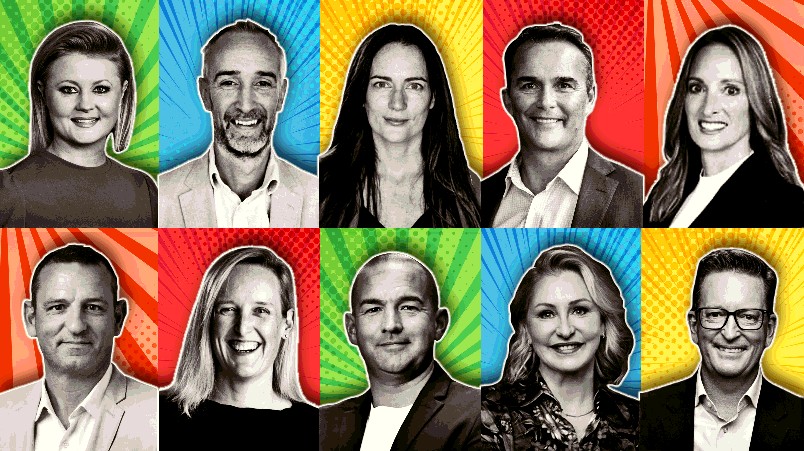
TV's race to transform amid aggressive incursion from all quarters made up most of Mi3's top read media stories in 2023. As did the main network's countermeasures. Tensions around measurement and currency came to a head – a story that will play out next year. But the big bang threatened by global streamers' push into advertising turned out to be a damp squib, though next year may be different. Retail media's rise continued, with the likes of Nine and News positioning to get in on the action, as did BVOD's frequency capping problem, though some suggest it's within agencies' power to fix it.
30.
It’s going to be a world first, which is massive. It will provide the clarity we’ve wanted for years in regards to the incremental reach BVOD is delivering on top of terrestrial TV.

“We still don’t have the data in our third party software – that arrives today [Wednesday],” says Magna Global's National Managing director, Lucy Formosa Morgan on the release of VOZ data. “I will say it’s not gold standard certified yet.”
Sentiment shift: Five years on, broadcasters release VOZ total TV audience data for transition to new 2024 trading currency; media buyers ‘feeling very positive’, heat on software firms to avoid reporting conflicts and chaos
Broad market frustration and sometimes disbelief at the continued delays from broadcasters promising an audience measurement system that shows how Australians are consuming TV content via rooftop aerials, connected TVs and mobile devices started to turn back in May when agencies got their hands on the first press of VOZ total TV data. Terms like ‘world first’, ‘gold standard’ and a ‘significant development’ are back instead of market angst. But there’s still some time yet before the (potentially) great transition.
29.
We’re not afraid of competition from SVOD players [streamers], that is not going to go away. We’re afraid of being gate-kept. It's not about being given preference, it’s about consumers not being given a choice via a level playing field. Do we really want to get to a situation when all they can [readily] access is TV content they have to pay for, or Youtube?
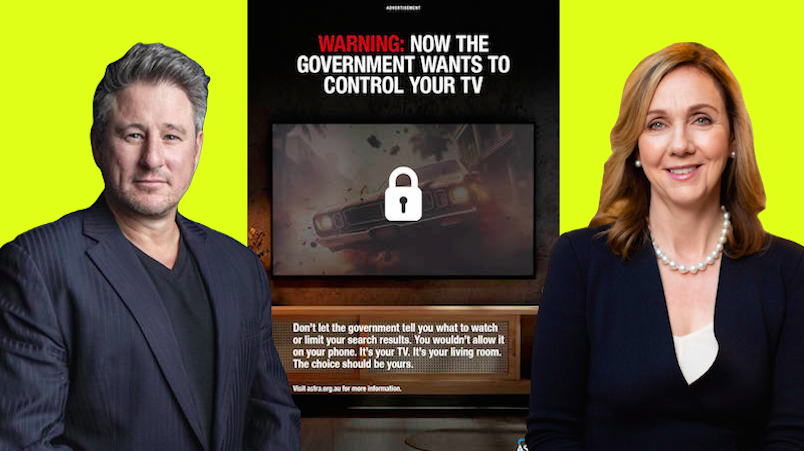
Nine CEO Mike Sneesby & FreeTV CEO Bridget Fair: TV's internet delivery tipping point is fast approaching, regulators need to avoid web gatekeeper mistakes and shun pay TV-streamer scare tactics (i.e. Australian Subscription Television Assoc ad pictured).
Nine boss Mike Sneesby nods to 'tipping point' from linear to digital in five years as battle rages for app dominance, viewers, ad budgets on connected TVs between broadcasters, streamers
Nine CEO Mike Sneesby acknowledged in a November media briefing that free-to-air TV would lose its 66-year control of big-screen viewing to digital streaming in about five years, just as a battle escalates with Foxtel and streaming platforms over the Federal government’s plans to legislate for broadcaster apps to have what rivals claim is "special treatment" on connected TV home screens. It could sway the viewing preferences, ratings and allocation of billions in advertiser budgets if the law passes, ensuring commercial broadcasters and the ABC and SBS have their apps placed prominently on any connected TV operating system, including Samsung, LG and Sony, under the argument of public interest. With the Feds showing their first draft this month, both sides of the debate claimed something of a win – but more lobbying on the final detail is already underway.
28.
The reason we continue to work with SBS is we’re buying reach you don’t get elsewhere.

Turning heads: Advertising opt-outs, a push to own ESG as advertisers and agencies start to walk the talk on investment allocation and a strong connection to audiences often underserved by publishers underpinned the SBS upfront.
SBS puts ESG centre stage with gambling, booze and fast food ads opt-out; commits to OzTam’s VOZ as Foxtel bids to build alt-currency coalition; makes FAST, personalisation push; buyers buy-in
Hot off the heels of declaring it is the first TV broadcaster to go Net Zero on direct carbon emissions, Australia’s most multicultural conscious broadcaster has been busy working to deliver against the ‘S’ in its ESG framework. It’s giving on-demand viewers an opt-out on gambling, alcohol and fast food ads, setting a template for rival broadcasters as regulation looms. Meanwhile, it’s joining the FAST channel race and honing its recommendation engine in a bid to boost user experience. SBS also confirmed exclusive rights to the men’s FIFA World Cup, a sporting win amid a culturally conscious and thoughtful content slate. Media buyers and marketers at the network’s Upfront liked what they saw. Meanwhile, days after Foxtel broke cover on plans for an alternative TV currency, SBS reaffirmed its commitment to VOZ, OzTam’s total TV metric. "That's put the cat amongst the pigeons," per one agency exec.
27.
I didn’t see more data-led entries. I was surprised by that, because it's such a priority across a lot of categories, and it's also a big theme for where agencies have been upskilling. But it didn't come through, certainly in the categories that I judged.

Judge and jury: (L-R): Diageo's Sarah Sorrenson, Deakin University's Lisa Ronson and Arnott's Jenni Dill.
Standout brand, agency media work unveiled in MFA Awards: Lego, NRMA, Defence Force, Mars, Suncorp, Dell, Netflix, Campari lead shortlist; Initiative, EssenceMediacom, OMD top agency haul
Lego, NRMA, Campari’s Aperol, Netflix and Suncorp were among those heading the MFA Awards finalist's leaderboard heading into business end of scoring. In this podcast three judges – Arnott’s CMO, Jenni Dill, Unilever’s former Director of Digital Marketing, Media and Commerce, Sarah Sorrenson, now Global Head of Media at Diageo, and Deakin Business School’s Adjunct Professor and former CMO at Coles and Tourism Australia, Lisa Ronson – unpacked why some entries got their likes, and laments. Which might be instructive for anyone planning to enter in 2024.
26.
SVOD is going to take some growth from BVOD. It takes time to scale, for advertisers to understand the platform, how optimise their engagement etcetera. But it will be a growing competitor to BVOD through 2024, particularly around the mid-year point.
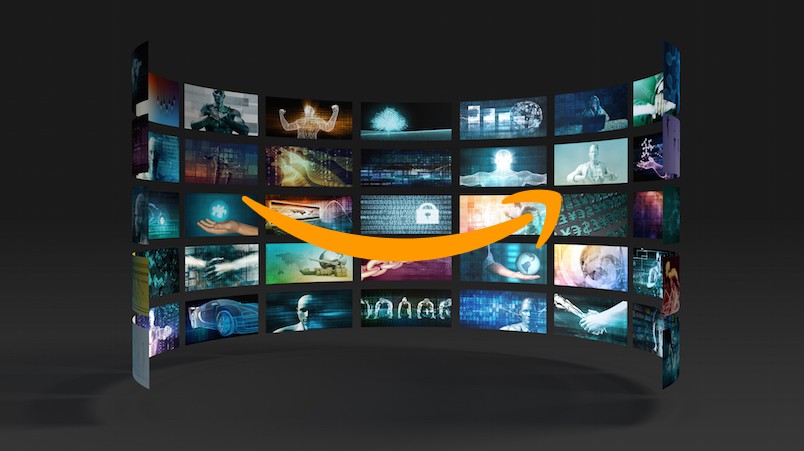
Prime mover: Advertisers aiming to tap SVOD audiences at scale may soon have something to smile about.
Amazon Prime takes on Netflix, Binge with ad-supported streaming service set for mid-2024; pledges 5 million Australian users at launch, streamers set for $100m advertising take from broadcasters
Amazon Prime is the latest subscription streaming service to spurn a no ads policy, currently briefing key media buying groups on plans for the June 2024 launch of an Australian ad tier with three-month launch packages of $150,000-$250,000 to 5 million members. That's right: 5 million. The high subscriber figure surprised some but comes as Australia’s biggest ad buying consortium, Omnicom Media Group, forecasts subscription streaming services would strip $75-$100m in ad revenues from free-to-air TV next year – warning some leaving it late to launch ad tiers may find it hard to catch up.
25.
Clients are open to paying more for lower ad loads … if you can guarantee greater attention.
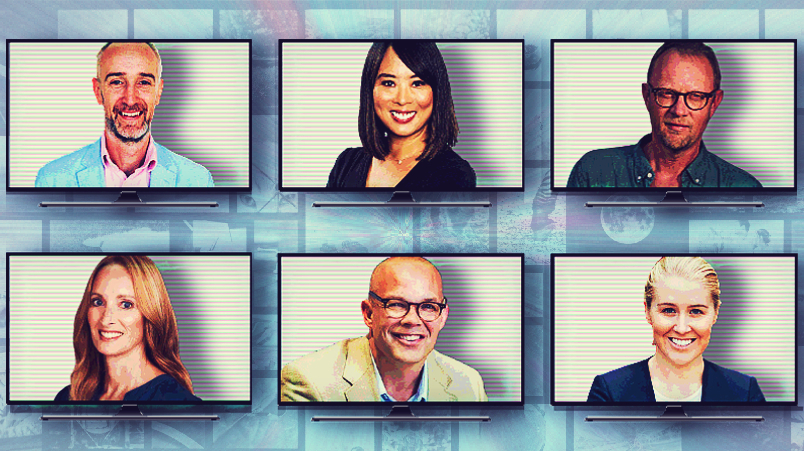
L-R: OMG's Kristiaan Kroon, Paramount's Diane Ho, Mi3's Paul McIntyre, Magna's Lucy Formosa Morgan, The Trade Desk's James Bayes and Foxtel Media's Bridget Murphy.
Omnicom’s Kroon questions Netflix ad tier lifespan, sales structure, CPM premium; IPG's Formosa Morgan backs ‘better’ Binge pricing model as streamers battle BVOD for $300m leakage from free-to-air TV
After an underwhelming foray into advertising by Netflix, media buyers at two of the world's largest holding companies in April warned streaming platforms pushing into local ad-funded models must consider how to quickly scale, sell and deliver better data. Otherwise they risk losing early market commitment and price premiums – upwards of 50 per cent on BVOD CPMs – and a slice of the $300m forecast to leak out of free-to-air TV this year. But they said the emergence of ad-funded streaming platforms provides a chance to prove the theory that advertisers are willing to pay more for lower ad loads. "We're about to find out," per OMG investment chief Kristiaan Kroon.
24.
Linear TV audiences declined by 20 per cent and some have streaming services. We're having to think about that quite differently.

Media chiefs: Greg Graham hosts a panel featuring Melissa Fein, Aimee Buchanan and Mark Coad
‘Same shit, same tonnage’: GroupM, Mediabrands, Initiative CEOs lament lack of agency innovation, short-term focus, client ‘expectations delta’ and too removed from ‘reality of middle Australia’
Media agency bosses want adland to innovate more and up-end how they've operated for at least two decades. Challenging economic headwinds has placed pressure on clients, who are holding back budgets, for now, while their expectations on what agencies can deliver are inflated. Media fragmentation presents a rising conundrum for the market and the current economic conditions are restraining more progressive leaps into sustainable comms in favour of business performance objectives.
23.
It will be the only place you will be able to plan, buy and post-analyse reach across linear and BVOD utilising the Oztam ID ... No other provider has a single identifier to measure the incremental reach that one provider adds to another in a total TV world. You will be able to frequency cap and build reach modules across the piste.
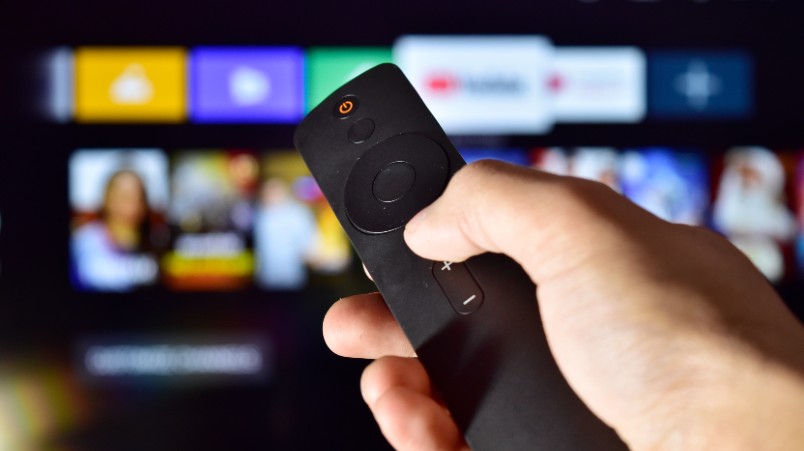
Australia's main TV networks Nine, Seven and Ten are one step closer to a cross-broadcaster BVOD trading and measurement system.
Seven, Nine, Ten break cover on OzTam powered BVOD trading system ahead of upfronts; bid to refuel growth burners, see off Youtube, streamers, solve frequency fails
Ahead of upfront season the major free to air networks officially broke cover over their plan to build a unified BVOD product that will enable deduplicated reach and frequency capped buys across Seven, Nine and Ten. They've badged the system 'Voz Streaming' and aim to be in market next year in a bid to counter YouTube's threat, incursions by ad-funded SVOD players – and head off ongoing complaints about ads played on repeat.
22.
They’re being smarter with their tech than I thought they would be. It was super interesting and exciting for our country to give the global streaming players a run for their money.
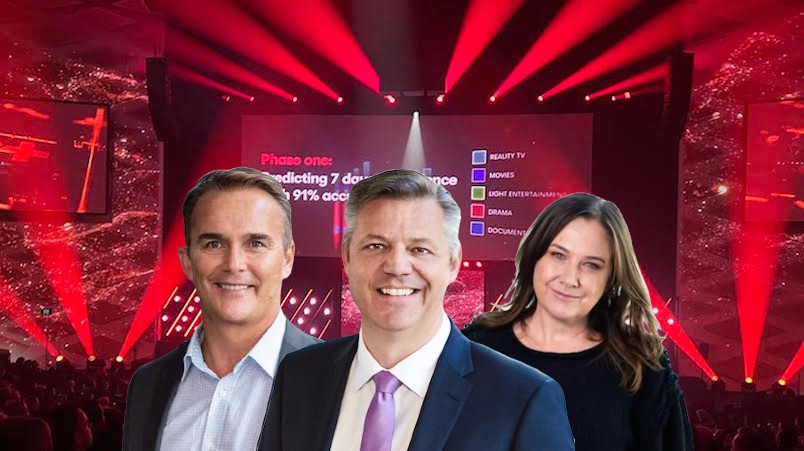
Harnessing SxSW trade winds: Kurt Burnette, James Warburton and Mel Hopkins.
Seven guns for global streamers with AWS personalisation – 7plus viewing up 48%; next is ad loads tailored to viewer tolerance; industry froths at cricket, AFL play
With a few disgruntled exceptions, most advertisers and media buyers exited Seven’s “massive” Upfronts pitch relieved that it fell well short of a two-hour epic and cautiously upbeat about an AI-laden rollout of initiatives and all-screen sporting rights that Chief Revenue Officer Kurt Burnette declared was the “biggest news of any upfronts” and the “biggest change-up to sports rights in history”. The snappy event was the first for former Optus CMO Mel Hopkins, who as the show’s Executive Producer and Seven’s new-ish Chief Marketing & Audience Officer, beseeched a few thousand to keep an open mind as she channeled her past life in the audience as a customer of Seven “intrigued … and perhaps a little sceptical”.
21.
The only barrier I see around how Binge, Netflix and other AVODs fit into the industry is measurement ... What the industry wants is one holistic measurement system that captures everything – and that's not currently available through VOZ.
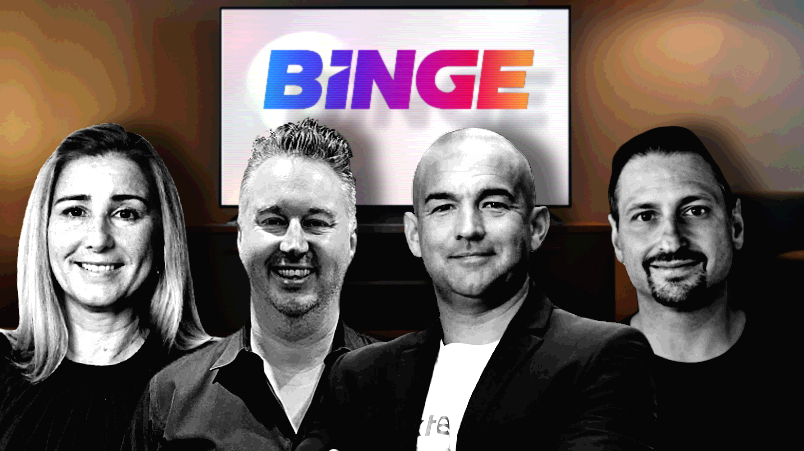
Binge has opened its doors to the wider market. Melissa Hey, Craig Cooper, Mark Frain and Jason Tonelli unpack what this means
Frain signals ‘20-30%’ Binge ad growth as Foxtel eyes programmatic push, hedging on Voz versus own measurement; agencies warn streamers not to get greedy as Netflix mulls own ad stack
Back in July Foxtel Media's CEO was predicting major revenue gains for its ad-funded tier on Binge as it opened up to all advertisers. But buyers said it wasn't yet eating linear TV budgets and urged Binge and the other streamers to commit to OzTam’s total TV measurement system and collaborate on frequency capping or risk crimping growth. No dice as it later turned out. Meanwhile, reports that Netflix could drop Xandr and is building its own ad stack were met with scepticism given the cost involved. GroupM’s Melissa Hey, Carat’s Craig Cooper and Zenith’s Jason Tonelli weighed in.
20.
The losses that we’re seeing now in several of the major digital platforms, whether they be Snap, Twitter, others … it’s money shifting to the retail media category for the first time this year.
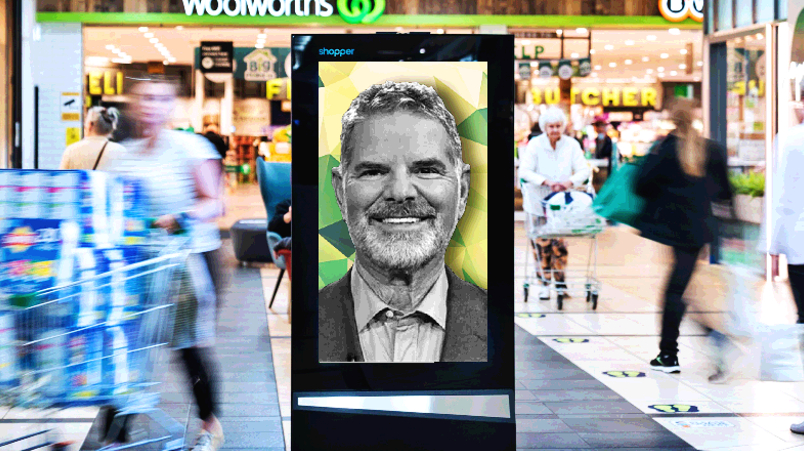
Jack Myers: "Facebook, Google have benefitted over the last decade from having their own first party data. Now brands are looking at the availability from their retail partners of first party data. It’s only natural that they are going to connect it."
The revenue declines at Snap, Twitter, Facebook, even YouTube are down to retailer media' - who's next?
Data compiled by US analyst Jack Myers suggests tech platform revenues are being hit hard by retailer media’s rise – and the softness in TV markets is no coincidence. Australian market dynamics differ, but Citrus Ad founder Brad Moran reckons Coles and Woolworths “could dominate the entire ad market if they wanted to”. Agency execs think search and social have more to worry about than TV networks. But some experts think the looming privacy overhaul – and ensuring compliance costs – may curb some retailer enthusiasm to monetise loyalty data via retailer media networks, while blowing a hole in the economics of loyalty programs themselves.
19.
Whether it's Commbank, David Jones, Coles 360 or Cartology, they've all talked about off-network assets they don't own that goes beyond YouTube and Meta. It's a clever strategic move by Nine to invest in that [retail media] space and potentially look to operate almost a wholesale arm…

Nine Upfront: CMO Liana Dubois, CEO Mike Sneesby and Chief Sales Officer Michael Stephenson.
Reaction: ‘Big mistake’ - Nine holds firm on no Stan ads at upfronts, ires some, ignites most with group-wide data sharing, Olympics ‘anti-ambush’ strategy, plans to woo young, light and lapsed
The investment boss at the country’s biggest media buying group says Nine will “regret in time” not allowing ads on its streaming service Stan after disappointing most with a no-show announcement. But otherwise the media giant’s Upfronts – the first of a now hectic season of media shows to land $14bn in 2024 ad budgets – gave media agencies and advertisers the party bag they hoped for. "The Olympic legacy was Seven but Nine has a broader asset base to promote and multiple options for content consumption – it will be massive," says Elizabeth Baker, Zenith's Chief Investment Officer. Baker's peers at Mediabrands, OMD, GroupM, Wavermaker and OMG were all but frothing over Nine's move to deal itself into the booming retailer media sector and allow audience data to be tapped simultaneously across its portfolio – for the first time. 3,000 people turned up or tuned in for the gig.
18.
I suspect within five years Nine's streaming and on demand product in 9Now will be probably 50 to 60 per cent of what Nine is today.
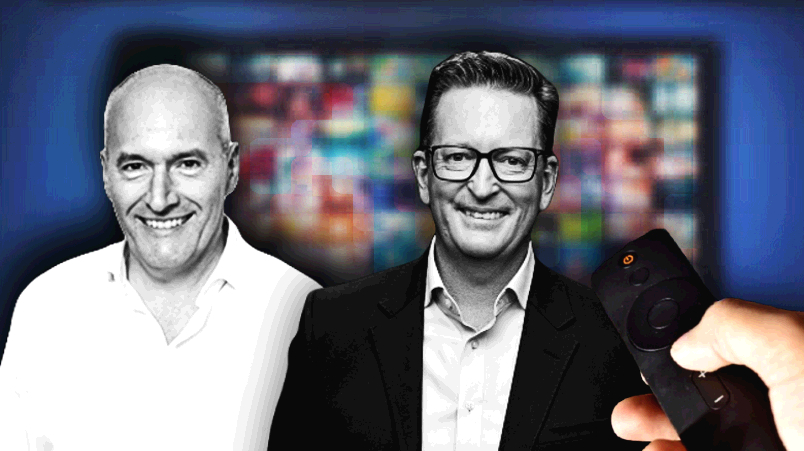
L-R: Ampere's Guy Bisson and Nine's Michael Stephenson - "Australia as a market remains stubbornly resistant to an online video advertising transition. In pretty much every other market, those lines crossed last year or the year before," says Bisson.
TV tipping point 2027: Nine backs forecast for online audiences, ad market to overtake free-to-air in five years; Netflix, Disney+ ad tiers to land 8.5% of customer base - 1.6 million subscribers
Australia's $3bn free-to-air TV business remains “stubbornly resistant” to global TV forces which have already switched the delivery, dollars and dominance of broadcast TV to digital video in the US and UK markets. Video ad revenues on IP screens and devices abroad are now larger than the once-untouchable terrestrial and pay-TV ad markets. But hold out as they might, Australian terrestrial broadcasters are set to lose their decades-long ascendency in the ad-funded media market. By 2027 the tipping point lands here: streamed digital video will be bigger than the killer advertising channel of all time, free-to-air TV, according to the LA-based executive director of Ampere Analysis, Guy Bisson. The timeline was all but backed by Nine’s Chief Sales Officer Michael Stephenson at the Future of TV Advertising forum last week in Sydney as new research on the profile of Netflix ad tier subscribers suggests there's more duplication with online broadcaster audiences than some might hope.
17.
The market is a flood of makegoods at the moment. That's all it seems to be. There's no show hitting anywhere near the numbers that were proposed.

US TV market turns: “The second quarter is looking stronger than originally predicted. We're getting fewer cancellation options...broadcasters lost more audience than predicted but the dollars flowing in are higher": Vevo global sales boss Kevin McGurn.
‘Market flooded with TV makegoods’ as VOZ total TV measurement slated for May; media buyers target 50% ad price premium for Netflix, Binge
Advertisers with big TV budgets say linear TV’s audience slump is flooding screens with audience makegoods that are spilling to BVOD services to deliver viewing numbers – “there’s no show hitting anywhere near the numbers that were proposed,” one CMO at a large TV spender told Mi3 in the lead-up to April's Future of TV Advertising forum in Sydney. But media agencies warn the $300m-plus forecast to exit the linear TV ad market in 2023 poses some reallocation challenges – Carat Chief Investment Officer Craig Cooper said “unfortunately we’re probably over-indexed in YouTube because it’s getting more and more difficult to reach the younger end”.
16.
[Fracturing currencies] would create complete chaos for everybody. It would create more hard work that we’ve ever seen before. So having a single currency that is supplemented with additional data sources and data sets makes sense [but not multiple currencies].
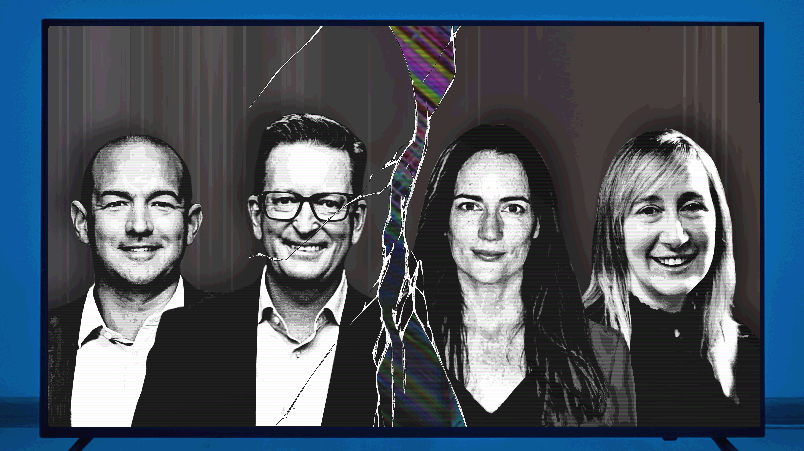
Incoming fractures? Foxtel's Mark Frain, Nine's Michael Stephenson, YouTube's Caroline Oates and Vevo's Natalie Gabathuler-Scully suggest the industry is approaching measurement crunch time.
Fractured currencies? YouTube, Foxtel Media move closer on digital measurement for ‘total TV’ as Nine warns of breakaway chaos; VOZ hits market May 1
The once united front from broadcasters on a single ‘gold standard’ TV and video measurement system via OzTAM began to publicly breaking down back in April. Nine told YouTube at the Future of TV forum it was welcome to join OzTAM if it played on the same terms as broadcasters; YouTube all but ruled that out as Foxtel Media made clear overtures it would move ahead of its broadcast frenemies by adopting digital measurement – impressions – across its streaming channels and its million set-top box subscribers. Vevo, meanwhile, with a global footprint in digital and terrestrial TV, said adopting multiple audience currencies is inevitable. Which may be where Australia is headed.
15.
It was a bit of a tough conversation internally. It took a lot of debate to get the commitment to do it. But James backed me and here we are. It just felt right – not just talking about what we do, but showing what we do.

Bridging the creative-tech-culture divide (l to r): Seven CMO Mel Hopkins, SXSW Sydney MD, Colin Andrews, Seven CRO Kurt Burnette.
'We’re going all in’: SXSW’s biggest tribes are brands, marketing, tech as Sydney gig aims for Southern hemisphere creative, innovation super event; Seven plots biggest overhaul of Upfronts format in decades with full-week SXSW program
Uber launched at South by Southwest, as did Twitter, Pinterest and Foursquare. Billie Eilish was discovered as an unsigned 14-year old. Mumford & Sons first made their name at the creative-tech-culture jamboree in Austin, Texas. Joining that esteemed line-up was Seven, which decided to make a major bet on partnering with the creative-tech-innovation powerhouse as it came to Sydney. Chief Revenue Officer, Kurt Burnette, admitted getting the investment over the line was a “difficult conversation”, but he backed the big play to position the network at the heart of the creative-tech nexus and change perceptions.
14.
You find in these environments you're getting a highly engaged audience, and that is going to have more impact and cut through because there's actually less advertising.
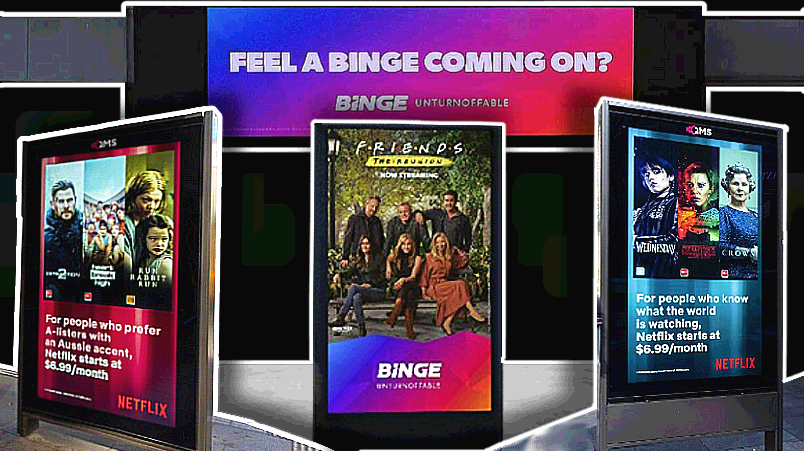
The new streaming ad kids, Netflix and Binge, are on the rise but TV networks are now plotting their Upfronts strategies for later this year - expect a strong counter.
Rise of the AVODs: Netflix ad roll-out 'turns a corner' after 'rough start', Binge ad tier sees 'negligible' churn rate ahead of open market launch; non-ad streamers urged to fast track ads in AVOD arms race
Stung by a spluttering launch of its ad tier service late last year, Netflix by mid-2023 had started to get its act together for advertisers. But it has some work to do to overtake Foxtel Media’s Binge on scale. Binge opted to convert all of its entry-level subscribers onto an ad-funded plan versus Netflix which is building an ad tier audience from scratch. With Disney+ predicted to launch an ad-tier in the next year, Amazon Prime revealing its own advertising ambitions and Paramount+ already dabbling with sponsorship – the AVOD duke out is heating up.
13.
[News Corp's new tech stack is] aimed at doing one thing – and that is moving passive readers and viewers to active buyers.

News Corp banks on "Total Commerce", AI for new revenues. L-R: Mark Brownie, Lou Barrett, Michael Miller, Pippa Leary and Paul Blackburn front the publisher's national D_Coded roadshow
News Corp closes gap on Nine in ‘Total Commerce’ rollout; inks Westpac DataX deal; AI to link consumer intent signals to ecom inside content, conversion rates jump 30%; revives troubled publisher short-form video to take-on BVOD
News Corp landed some heavy hits at the start of its D_Coded national roadshow, building out its pledge over the past year to link audiences to ads and ecom transactions in a bustling “full funnel” suite of new data and tools it calls “Total Commerce”. The publisher has struggled to tap the market stampede to digital video formats but armed with new reach and audience engagement data from measurement firm Adgile, it wants a bite of the TV networks’ BVOD boom and social video with shoppable vertical video for its base of 75 million streams per month. The publisher said it had increased its investment in video tenfold this year. Buyers said the momentum is now with News, raising the pressure on Nine. But how all of this plays out under looming privacy changes is the question everyone now faces.
12.
We know that in challenging times people are asked to constrain budgets. Here is a way for you to look at the way you're buying media, particularly if you're considering reductions. Just be careful where you take that money from. The data shows it is not about removing a channel and assuming the rest will do the job.

ThinkTV's Kim Portrate (left) and Kantar's Sharon Hilton: "Incredibly robust data" for marketers making channel choices as headwinds bite.
Kantar: TV and OOH combo drives best awareness bang for buck, Youtube scores poorly
Combining television and outdoor advertising delivers the biggest brand awareness buck, although it's linear TV that does most of the heavy lifting, according to a study by Kantar. Outdoor delivers lower standalone awareness, and is also more reliant on other media to deliver its full potential, per the research. Youtube, meanwhile, did surprisingly poorly in the study. Some may question the credibility of the research, commissioned by ThinkTV, but Kantar stands by its data and independence.
11.
It takes hard work, dedication, and resilience to consistently deliver to your client’s needs at the highest level whilst at the same time navigating our dynamic and complex media landscape.

oOh!Media's was voted best national media sales team in Australia by a panel of 3,500 media agency execs.
Media i Award winners: oOh!Media, ARN, The Trade Desk, Yahoo win state battles; see all of Australia's media sales top guns here
oOh!Media won the national media sales team of the year at a packed Media i awards in November. The Trade Desk was voted best in Sydney and Victoria, ARN took Queensland, oOh! won in South Australia with Yahoo's sales team named by agency peers as the best in WA. See all the individual best media sales people in Australia – as voted by their media agency counterparts – here.
10.
For many, brand and trade is siloed. FMCGs need to set themselves up to ensure everything is connected ... If they do that, agencies will align themselves.
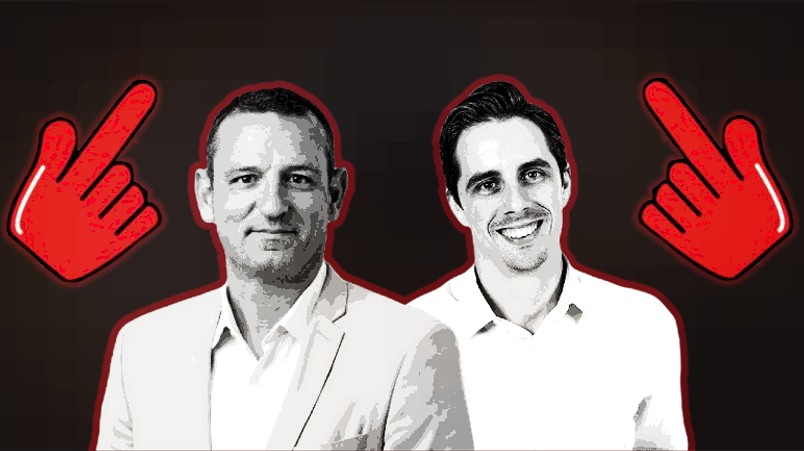
Up up? Coles 360's Paul Brooks and Sam Hegg reckon brands that align trade and marketing teams will win retailer media race – and agencies will follow their lead.
‘Nail CX, growth follows’ – Coles 360 bids to reel in Cartology by lifting Tesco template, Ocado fulfilment model will 'double advertising opportunity', but FMCGs must align trade and marketing to win
Coles is bidding to catch rival Woolworths in the race to become a major media business. But marketers are demanding greater rigour around measurement and reporting – to move bigger slices of budget, they want more data. Meanwhile, agencies risk being sidelined because trade sales teams have historically handled the money and owned the retail relationship. Coles 360 boss Paul Brooks and strategy lead Sam Hegg see structural shifts ahead. Here’s the plan.
9.
It’s just a good way to make money.

Fast bucks? Variety's Gavin Bridge says broadcasters and content providers are "leaving money on the table" by failing to exploit audience demand for curated – often old – shows and dedicated single content channels.
FAST TV: ‘$300m market within four years’ as Australians stop wasting 100 days trying to decide what to watch, broadcasters ‘re-monetise’ old shows; how Ten, Nine, Seven – and Samsung – are tracking
FAST TV is booming in the US and Australia, where locally there are already 389 free ad-supported TV channels and where the market is likely to grow to $300m within four years, according to Variety VIP intelligence chief Gavin Bridge. He told the Future of TV Advertising conference that it's easy cash, because audiences want curation and are happy to watch recycled shows – and urged networks and CTV operators not to leave money on the table.
8.
In programmatic media and BVOD ... the transactional nature of the ecosystem means that any mistake can be traced back to one party, and that party would have to pay for it. So no one wants to admit that they made a mistake or that they forgot to apply a frequency cap or that they used the wrong setting in their DSP. Everyone claims to be perfect, all of the time.

BVOD Project: De-duped reach and frequency capping across all the main broadcasters in one click?
BVOD frequency capping: Three month panel finds big brands blowing budget, hitting viewers 20 times a week – but insisting reports show no problem
In mid-2022, Uber's global marketing boss blasted TV networks' seeming inability to frequency cap, leaving viewers bombarded by the same ads. A year later, the problem is that nothing has changed, says Adgile founder Shaun Lohman. The firm set up a panel of BVOD viewers and used content recognition to track every ad they saw for three months. It found big brands in automotive, FMCG and betting hitting people 20 times a week. But when he contacted brands, they said their frequency reports showed no such thing. Which is a little strange. Because shortly after the repeating stopped. Either way, here's what marketers should be asking of their agencies to keep frequency in hand.
7.
Our ultimate goal here is to connect marketing metrics with business metrics.
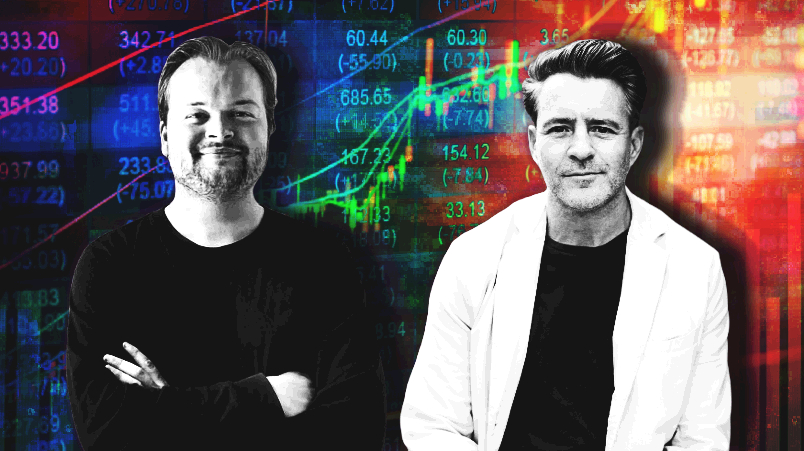
L-R: Mutinex CEO Henry Innis and Dentsu Media CEO Danny Bass want to change media buying with AI-led ROI "industrial analytics".
‘Byron Sharp should like this’: Big datasets behind Dentsu Media ANZ's deal with AI market mix modelling startup Mutinex; links core business KPIs to media, brand metrics; CX next
Dentsu Media ANZ in April inked a deal certain to set tyres smoking among media companies and rival agency groups; the local unit of the Japanese-owned global communications holding company just went outside the camp to ensure it’s place in the lead pack deploying AI in automated econometrics and market mix modelling. The most unsexiest of capabilities in marketing is about to beat slower humans doing bespoke projects and go mainstream with faster, cheaper and more predictive automation. The alliance, with a limited exclusivity period (since expired), pledges better results for blue chip clients by planning, buying and even changing media and publishers mid-flight based on pre-determined real-time tracking of business KPis, including revenue or profit – instead of just traditional media and brand metrics.
6.
So here’s where I’m a little embarrassed as a marketer. I did not really appreciate [broadcast] video on-demand very well. I thought it was just catch-up viewing [of free-to-air shows] and free [advertising] bonus. I didn’t really pay that much attention to it. My fault.

Seven West Media's Mel Hopkins and Natalie Harvey
‘I drank the Kool-Aid’: Seven CMO Mel Hopkins says marketers, agencies buying bad narrative and bias on total TV audiences versus YouTube, streamers – and Foxtel
As far as mea culpas go, Seven’s CMO and audience boss Mel Hopkins delivered one of the biggest from a high profile marketer. Weeks out from the broadcaster's upfronts, the poacher-turned-gamekeeper is a little more than miffed at market behaviour and perceptions perpetuating a false narrative and bias around total TV viewing versus YouTube, streaming and the rest. Hopkins admits she was guilty of the same “bias” while she was Optus CMO, before joining Seven in March. So could she – would she – have listened if she was not working for a broadcaster?
5.
I have no concerns over this product [BVOD Project]. YouTube tells us they have six times the inventory of the three free-to-air networks combined on CTV. It’s hardly anticompetitive.

BVOD Project: De-duped reach and frequency capping across all the main broadcasters in one click?
BVOD versus YouTube: TV networks move from defence to attack, repitch cross-network OzTam-powered buy, leaving global adtech players with major decision
The main free to air TV networks in April quietly repitched their plan to combat YouTube’s might and claw back some of the estimated $2bn in ad revenue swallowed by the Google-owned platform with a unified BVOD play powered by OzTam IDs. Agency execs think it just might work – though it will likely disrupt some of their business models and shine a light on the mark-ups being added to inventory. But whether the BVOD project flies may ultimately rest with global adtech companies – and they may decide to not play ball.
4.
Part two of [our retail media play] is the relationship that I can see between ourselves, retail media partner, and advertiser to create new business models, new affiliate programs, create new data and ad products, maybe into the future joint ventures or who knows, even M&A activity.
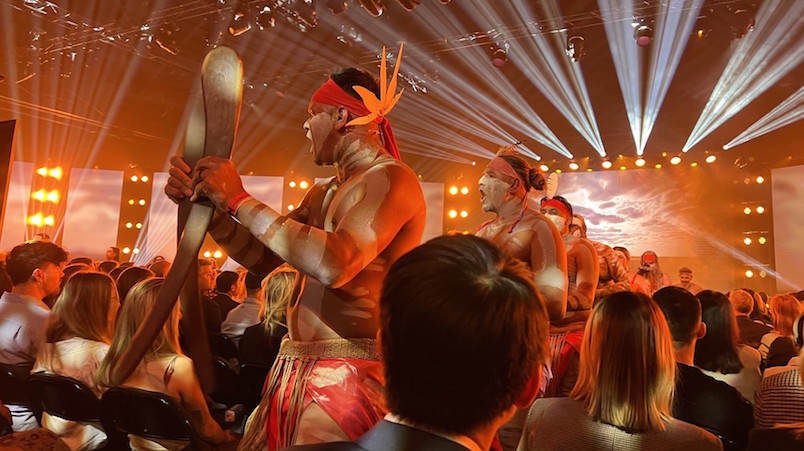
Dancing to a different beat: Nine makes major play for small business dollars and Meta's lunch; dives into retailer media in defensive-offensive play; goes to town on Olympics.
Nine eyes $1.5bn, takes on Meta, Google with small business AI ad platform; enters retail media; counters News’ ecom play, touts $12.5m top Olympics package
Nine is taking on Meta and Google, targeting small businesses spending $1.5bn a year with the platforms via a self-serve platform that uses AI to build digital video ads in seconds and hyper-target them. It's aiming at 2.5m new advertisers for $500 a pop. The network is also entering Australia's fastest growing ad market: retail media. Michael Stephenson sees gaping opportunity to connect brand comms to point of purchase performance – or "sofa to store" – and hints at potential M&A down the track. Meanwhile, Nine's now going to market in earnest for the Olympics, touting top-end packages between $10.5m and $12.5m. There's room for 15 key partners, which now have a 40-day window to secure sponsorship before a broader market push. Advertisers aiming to get in front of Stan audiences may be disappointed – there's no current plans to join Netflix and Foxtel's Binge with an ad tier. But Stephenson said Nine is already targeting Stan audiences – and building more 'tribes', or segments, for brands keen to tap the streamers across the network's broader properties. On that front, Nine is making a concerted effort to combine all of its data across TV, publishing and audio to extract maximum value from circa 20m audience log-ins.
3.
This particular defamatory ad highlights how difficult it is to identify the people behind it – who are often overseas – and illustrates why the companies collecting these ad dollars should play a more active role in preventing scam ads.

Eddie McGuire targeted with more than 200 fake ads on Facebook, Instagram and Twitter; Nine slams 'defamatory ads' and 'passive' platforms letting fraud flourish
Social media companies in September came under fire to take tougher action against fraudsters after more than 200 fake ads depicting Eddie McGuire being arrested and flogging bitcoin circulated on Facebook, Instagram and Twitter. Nine argued the ads are defamatory and damaging to the Millionaire Hot Seat host, calling on platforms to take firmer action to vet and prevent fraudulent ads from being posted. Facebook said it uses tech to identify fake ads, but admitted the process is imperfect and that it often relies on users to pick up scams. Twitter was “too busy” to deal with Mi3’s request about fake ads circulating on its platform. McGuire has been targeted before, threatening to sue Facebook over fake erectile dysfunction ads in 2018. Others in Australian TV have also fallen foul of fake ads; one of the regulatory issues being scrutinised by the Government’s Digital Platform Services Inquiry.
2.
2022 saw the biggest decline in TV history. The real issue for advertisers is can they buy the same [audience] reach cheaper elsewhere. TV reach hasn’t declined, it’s just they’re not there as often for a longer period of time.
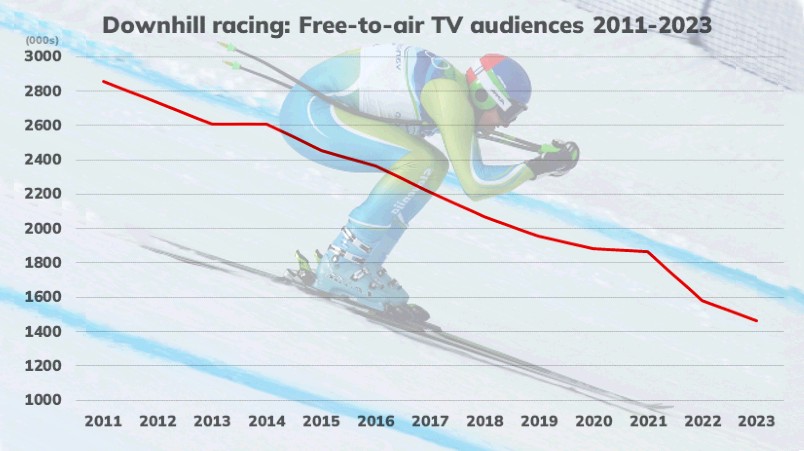
Source: Pearman FTA Television and Streaming Services report, December 2022. Quarter Hour Audience Peak Night, Adults 18+. Excludes SBS. Pic: Image - Lauren Martin
‘Biggest audience decline in history of TV’: Nine bundles media assets to snag $305m, eight-year Olympics deal as $300m set to exit linear TV ad market this year
Australia’s biggest media buyer Omnicom Media Group (OMG) warned $300m is set to vanish from the linear TV ad market this year after a horror 2022 for audience declines – circa 20 per cent of free-to-air viewers in primetime last year went elsewhere in what Pearman Media’s Steve Allen described as “the biggest audience decline in the history of TV”. But Nine CEO Mike Sneesby brushed aside linear TV’s slump last night in officially announcing a $305m deal to cover the Olympics in Paris next year through to Brisbane in 2032.
1.
Netflix has been talking about record sales in terms of partnerships and advertisers coming on board – I’m not surprised given the excitement, even when there isn’t an audience to buy. It will be interesting see what the impression delivery is like.
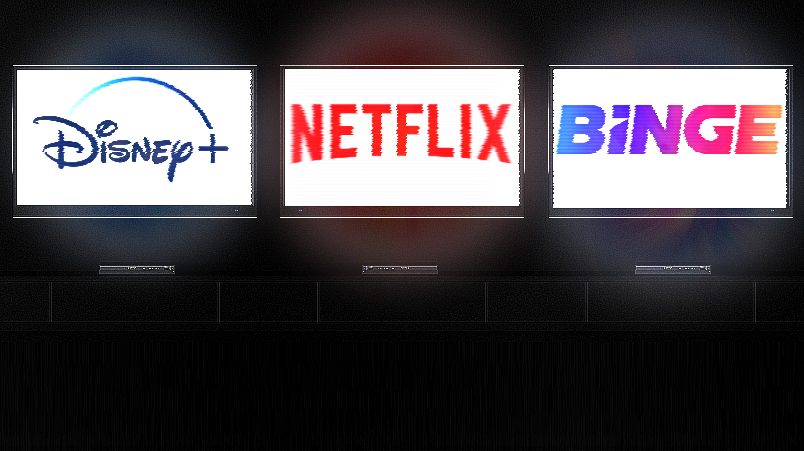
Streaming bad: Netflix ad tier launch bombs; Foxtel’s Binge sells out for ad phase launch; Disney+ ads slated for mid-year
Netflix’s first foray into advertising has bombed with Australian take-up of its $6.99 "Basic with Ads" subscription package missing pre-launch projections by 50-70 per cent. Media agency holding groups, representing blue chip advertisers and brands, each outlaid $6m or more for 12 months access to new ad tier subscribers. Three months on from its November 2022 launch, back of envelope calculations put subscriber numbers to Netflix’s ad tier package at 75,000-90,000.


